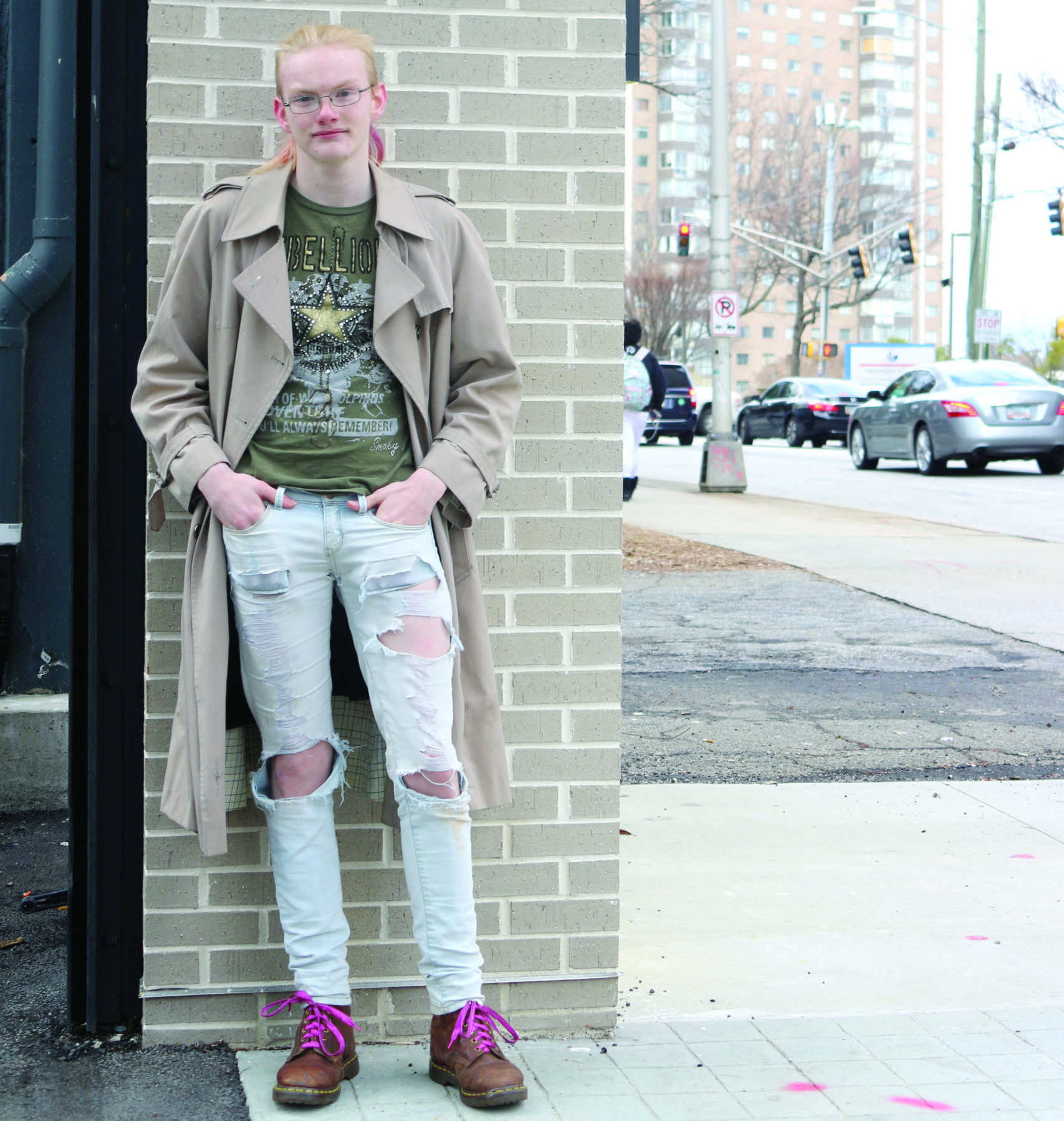
A high school girl nervously tugs at her shirt sleeve in the anticipation of a fearful diagnosis only to be relieved when the sex therapist informs her that her lack of desire to have sex is normal.
This is one plot point in the newest season of the Netflix series, “Sex Education,” in which the characters address asexuality.
Georgia State student Hailey Fulk defines asexuality as a “lack of sexual attraction or a reduction of sexual attraction,” noting that asexuality exists on a spectrum.
Fulk is gay and asexual.
“[People have] a tendency to group asexuality as a sexual orientation,” Fulk said. “I don’t like this because sexual orientation is more about who you love. Being asexual has more to do with how you interact with people you love in a romantic or sexual way.”
Fulk includes “demisexual” on the asexuality spectrum.
Demisexual refers to those who experience sexual attraction towards others only if they feel romantically attracted to them.
In Fulk’s case, she has the capability of feeling romantic attraction towards others, though she has never experienced sexual attraction and does not expect herself to in the future.
As the asexuality spectrum varies on degrees of sexual attraction, Fulk also noted that some individuals could feel the opposite as she does. They may just want sex and not want the romantic attraction alongside that.
“There are people out there who are just in it for the sex. That’s all they want out of a relationship,” Fulk said. “There’s people who only want one-night stands, and that’s valid.”
According to the Gay and Lesbian Alliance Against Defamation, the “a-spectrum,” represented in the “A” of LGBTQIA+ encompasses asexual, aromantic and agender.
GLAAD defines aromanticism as individuals who may want relationships but may only experience platonic feelings towards those people as opposed to romantic attraction.
Just as someone can be sexually attracted to particular genders, Fulk mentioned that someone can be romantically attracted to particular genders as well.
“You can love a certain gender because of certain body structures, or you like something [about someone] that is usually a feminine or masculine physical trait,” Fulk said. “It depends how one thinks about the physical trait.”
For example, Fulk does not find abs sexually attractive.
“I like the way they look and the way they feel, but they don’t make me horny,” Fulk said. “It’s more of a romantical attraction to abs.”
Fulk first came to realize that she differed from others who are not asexual in “late elementary school,” unable to relate to her friends’ descriptions of their sexual dreams. Fulk’s dreams about her crushes never exceeded romantic kissing.
“I’m capable of having sex but don’t have the urge to have sex,” Fulk said.
Fulk described relationships as a “give and take thing,” mentioning that she is willing to have sex for her partners if she thoroughly trusts them.
“If you don’t want sex at all, you have that right to express that, but if I feel like I can trust my partner enough, it’s alright with me,” Fulk said.
For Fulk, this trust is rare.
She experienced “rejection after rejection and getting dumped numerous times,” due to not wanting to have sex with her partners at the time.
“I wholeheartedly believed I was unlovable,” Fulk said. “It seemed everyone I was interested in would date me but didn’t like the fact that I was ace,” a short term for asexual.
Hurdling that period of feeling as such, Fulk is currently in a five-month relationship with her long-distance girlfriend who is not asexual.
Fulk noted that one of the first conversations when Fulk and her current girlfriend decided to date was explaining to her girlfriend what it means to be asexual.
Apart from the previous rejections, Fulk’s asexuality has also caused her to feel “a little left out of conversations” with friends.
This is also depicted in “Sex Education” when the asexual character, Florence, is depicted on the outside of a conversation with her friends who hint that Florence will inevitably have sex with her male counterpart of the school play. Florence can’t seem to relate, feeling that something must be wrong with her, which leads her to the office of the sex therapist.
“I can make sexual jokes and I can laugh about them, but I can’t fully understand the appeal to have sex with another person,” Fulk said.
Fulk emphasized the pressure surrounding her of losing your virginity.
Assigned male at birth, Fulk was raised with the idea that it is an important thing to have sex. She also discussed that “to lose one’s virginity” can mean different things to different people, emphasizing that the concept of virginity is merely a social construct to begin with.
“Everyone knows what it means to be gay,” Fulk said. “If we had more representation in the media, [people] wouldn’t be as confused about asexuality.”
In the past, individuals have asked Fulk if her being asexual meant that she “reproduces by splitting herself,” referring to the form of asexual reproduction known as budding, most commonly found in invertebrates.
She responded that underrepresentation causes confusion.
The portrayal of an asexual teen in “Sex Education” is a start to the normalization of asexuality in popular culture.
Slice of Ace, a youtube channel run by an asexual identifying individual centered around asexual issues reviewed the show’s representation of the topic, saying that it was “phenomenal” and “hits all the right notes.”
“It’s not something to be fixed. It’s not something to be cured,” Daniel, the host of Slice of Ace said. “[Asexuality] is just a normal part of you and there are plenty of other people like you.”
He highlights the importance of the word “asexuality,” noting that defining one’s lack of sexual attraction can help them to find a like minded community, dispelling the internal notion that one may think that they are “broken.”
